Table of Contents
ToggleIn a world where cyber threats lurk around every digital corner, technical security safeguards are the unsung heroes of the tech realm. They’re like the bouncers at an exclusive club, keeping the riffraff out while letting in only the VIPs. But let’s face it: most folks think of security measures as about as exciting as watching paint dry. Spoiler alert: they’re not!
Understanding these safeguards isn’t just for techies in hoodies; it’s crucial for anyone who values their data. From firewalls that act like digital moats to encryption that turns your sensitive info into a secret code, these tools are your best defense. So buckle up as we dive into the fascinating world of technical security safeguards—because who knew staying safe online could be this intriguing?
Overview of Technical Security Safeguards
Technical security safeguards encompass a range of tools and practices aimed at protecting data and systems from unauthorized access and cyber threats. Firewalls serve as a fundamental barrier between trusted and untrusted networks, blocking harmful traffic and allowing safe data transfers. Intrusion detection systems monitor networks for suspicious activities, alerting administrators to potential breaches in real-time.
Encryption transforms sensitive information into unreadable formats for unauthorized users. By using encryption protocols, organizations can ensure that even if data is intercepted, it remains secure. Multi-factor authentication adds an additional layer of security, requiring users to provide multiple verification factors before gaining access to systems or data.
Identity and access management controls permissions for users, ensuring that individuals access only the information necessary for their roles. Regular software updates and patch management address vulnerabilities, ensuring that security measures stay current against evolving threats. Anti-malware solutions protect systems from malicious software, scanning files and processes for potential risks.
Data loss prevention technologies monitor sensitive data in use, in transit, and at rest, preventing accidental or intentional leakage. Backup solutions play a crucial role in data recovery, allowing organizations to restore information after an incident. Cloud security measures protect data stored in cloud environments, applying various safeguards to defend against breaches.
Organizations that implement these technical security safeguards build a robust defense against cyber threats. Prioritizing these measures strengthens overall security posture, enabling businesses to protect vital information and maintain user trust. Understanding their roles and interactions helps reinforce the importance of technical safeguards in today’s digital landscape.
Types of Technical Security Safeguards

Technical security safeguards encompass various tools and techniques designed to protect data and systems. Each category plays a critical role in maintaining security protocols.
Access Control Mechanisms
Access control mechanisms monitor who can view or use resources within an organization. Role-based access control assigns permissions based on users’ roles, limiting exposure to sensitive data. Another example includes attribute-based access control, which evaluates additional characteristics before granting access. Continuous authentication enhances security by verifying user identity during a session. Implementing these mechanisms helps ensure that only authorized users gain access, reducing the risk of unauthorized data breaches.
Data Encryption Techniques
Data encryption techniques transform readable data into an unreadable format, protecting sensitive information from unauthorized access. Symmetric encryption uses the same key for both encryption and decryption, making it efficient for large data volumes. Asymmetric encryption employs a pair of keys, enhancing security for communications. Advanced Encryption Standard (AES) is widely recognized for its robustness and efficiency. Proper implementation of these techniques prevents data exposure even if it is intercepted, ensuring confidentiality.
Network Security Solutions
Network security solutions focus on protecting data flowing through networks. Firewalls serve as barriers that filter incoming and outgoing traffic based on predetermined security rules. Intrusion detection systems monitor networks for suspicious activity, promptly alerting administrators. Additionally, virtual private networks provide secure, encrypted connections over less secure networks. These solutions mitigate risks associated with unauthorized access and maintain the integrity of sensitive data.
Importance of Technical Security Safeguards
Technical security safeguards play a key role in defending against cyber threats and securing sensitive data. Organizations rely on these measures to protect their digital environments.
Risk Mitigation
Risk mitigation strategies significantly reduce the likelihood of data breaches and unauthorized access. Deploying firewalls and intrusion detection systems monitors network traffic and identifies potential threats. These tools enable organizations to respond swiftly to incidents. Data encryption secures sensitive information, ensuring that unauthorized users cannot easily access it. Multi-factor authentication adds an extra layer of protection by requiring multiple credentials for access. Regular software updates help address vulnerabilities and prevent exploitation by cybercriminals. Ultimately, implementing comprehensive technical safeguards allows organizations to minimize risks and enhance overall security.
Compliance with Regulations
Compliance with regulations is critical in today’s digital landscape, affecting how organizations manage data security. Various laws, such as GDPR and HIPAA, mandate stringent security measures to protect personal and sensitive information. Technical safeguards help organizations meet these legal obligations while avoiding costly penalties. Identity and access management systems ensure that only authorized users can access sensitive data, aligning with compliance requirements. Encryption practices fulfill data protection standards, demonstrating commitment to safeguarding user information. By prioritizing technical security safeguards, organizations establish a solid framework to stay compliant and build trust with stakeholders.
Challenges in Implementing Technical Security Safeguards
Implementing technical security safeguards poses several challenges for organizations. Addressing these obstacles is vital for effective protection against cyber threats.
Cost Considerations
Budget constraints often limit the ability to invest in comprehensive security measures. Organizations face the challenge of balancing costs while ensuring adequate protection. Short-term expenses may overshadow long-term benefits, leading to underfunded security initiatives. Additionally, smaller businesses may struggle to allocate resources for high-quality tools and services, which can compromise their security posture. Prioritizing cost-effective solutions that meet security needs becomes essential for maintaining robust defenses.
Complexity of Integration
Integrating various security safeguards into existing systems can present significant challenges. Different tools may not always work together seamlessly, creating gaps in protection. Organizations often encounter compatibility issues between new safeguards and legacy systems, which can hinder effectiveness. Continuous staff training and adaptation to new technologies add further complexity to the integration process. Ensuring a cohesive security strategy demands careful planning and coordination among teams to successfully implement robust protective measures.
Future Trends in Technical Security Safeguards
Technical security safeguards continuously evolve to address emerging challenges. Organizations increasingly adopt advanced technologies to stay ahead of cyber threats.
Emerging Technologies
Artificial intelligence (AI) plays a vital role in enhancing security measures. AI-driven solutions automate threat detection and response, significantly improving response times. Machine learning algorithms analyze patterns, allowing for proactive identification of anomalies. Blockchain technology, with its decentralized nature, enhances data integrity and trust, making unauthorized changes more difficult. Quantum encryption offers unprecedented security through quantum key distribution, rendering traditional hacking methods ineffective. These technologies collectively strengthen the security posture of organizations across various sectors.
Evolving Threat Landscapes
Cyber threats evolve at an alarming pace, requiring a proactive approach to security. Ransomware attacks increasingly target critical infrastructure, putting entire systems at risk. Phishing tactics develop into sophisticated schemes, often tricking even the most vigilant users. Insider threats present another significant risk as employees may inadvertently compromise sensitive data. Nation-state actors engage in cyber warfare, aiming to undermine national security through targeted attacks. Organizations must adopt adaptive security strategies to counter these evolving threats and ensure sustainable protection against data breaches and unauthorized access.
Technical security safeguards are vital in today’s digital landscape. They not only protect sensitive data but also bolster trust between organizations and their stakeholders. By investing in these measures, businesses can effectively mitigate risks and adapt to an ever-evolving threat environment.
As technology advances, so do the strategies to safeguard data. Embracing innovations like AI and blockchain will enhance security frameworks. Organizations that prioritize these safeguards will not only defend against cyber threats but also position themselves as leaders in security and compliance. The commitment to robust technical security is essential for long-term success and resilience.




